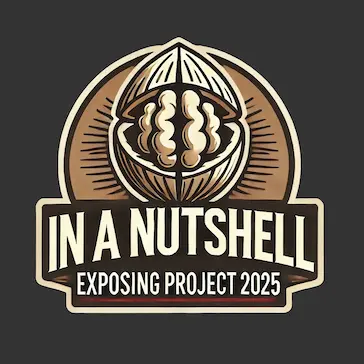Disinformation Campaigns in Project 2025: A Critical Analysis
Does Project 2025 propose any measures to combat or potentially exploit disinformation campaigns?
Introduction
Project 2025 takes aim at the growing influence of disinformation campaigns, but its proposed solutions risk opening the door to serious dangers for democracy. Framed as a national security effort, the plan’s strategies for controlling disinformation could centralize power over public narratives and threaten free speech. By shifting the balance of control over information to government authorities, Project 2025 raises alarming possibilities for political exploitation, censorship, and manipulation of truth. These measures, if misused, could undermine public trust in institutions, erode democratic principles, and stifle dissent in critical moments.
Combating Disinformation
Project 2025 acknowledges the growing threat of disinformation, particularly from foreign actors seeking to influence U.S. elections and undermine national security. The document proposes several measures to strengthen the U.S. government’s ability to combat disinformation, focusing on enhancing cybersecurity, improving information sharing between government agencies, and developing counter-narratives to disinformation (Project 2025, 2024, Department of Homeland Security).
One of the key strategies outlined is the establishment of a centralized task force dedicated to identifying and responding to disinformation campaigns in real-time. This task force would be responsible for coordinating efforts across various government agencies, including the Department of Homeland Security (DHS), the Federal Bureau of Investigation (FBI), and the intelligence community. The goal is to rapidly detect disinformation, assess its impact, and deploy countermeasures, such as debunking false information and promoting accurate narratives through official channels.
Project 2025 also emphasizes the importance of collaboration with private sector partners, particularly social media companies, to limit the spread of disinformation on their platforms. The plan advocates for stronger regulations that would require social media platforms to identify and remove disinformation more swiftly, while also promoting transparency in how algorithms and content moderation decisions are made.
Potential Concerns:
While these measures are aimed at protecting the integrity of information, they raise concerns about potential overreach and censorship. The centralization of disinformation monitoring and response could lead to an overemphasis on government control over what constitutes “truth,” potentially stifling free speech and the open exchange of ideas. Additionally, the pressure on social media platforms to remove disinformation could result in overly aggressive content moderation, where legitimate speech is suppressed due to fear of regulatory repercussions. The balance between combating harmful disinformation and preserving free speech rights will be a critical challenge for these proposed measures.
Potential Exploitation of Disinformation
Although Project 2025 focuses on combating disinformation, there are underlying concerns about the potential for these measures to be exploited for political gain. The document emphasizes the need to control the narrative in times of crisis, suggesting that the government should have the authority to shape public discourse to maintain order and national security (Project 2025, 2024, Executive Office of the President).
This focus on narrative control could be seen as an avenue for the executive branch to manipulate information in its favor, particularly during elections or other politically sensitive times. The potential for this power to be abused, whether intentionally or unintentionally, is a significant concern. If the government’s counter-disinformation efforts are perceived as biased or politically motivated, it could further erode public trust in institutions and deepen societal divisions.
Potential Concerns:
The risk of exploiting disinformation control mechanisms for political advantage is real and could undermine democratic principles. If the government were to use its authority to suppress information that is inconvenient or damaging to those in power, it could lead to an environment where dissenting voices are marginalized, and the public is misled. This could have a chilling effect on journalism, activism, and public discourse, ultimately weakening the democratic process. The potential for selective enforcement of disinformation policies also raises concerns about fairness and the rule of law, as certain groups or perspectives could be disproportionately targeted.
Implications of the Immunity Ruling
The Supreme Court’s immunity ruling could have significant implications for the implementation of Project 2025’s disinformation strategies. If government officials or agencies involved in disinformation control are granted broad immunity from legal challenges, it could reduce accountability and oversight. This might lead to unchecked use of disinformation countermeasures, potentially infringing on civil liberties and the right to free speech. The immunity ruling could also limit the ability of individuals or organizations to challenge government actions that are perceived as overreaching or biased, further concentrating power within the executive branch.
Conclusion
Project 2025 outlines a comprehensive approach to combating disinformation, focusing on strengthening national security and protecting the integrity of information. While these measures are intended to safeguard democracy, they raise significant concerns about the potential for government overreach, censorship, and the exploitation of disinformation control mechanisms for political gain. The balance between combating harmful disinformation and preserving free speech will be a critical challenge, and the implications of the immunity ruling further complicate these issues. As these proposals are considered, it is crucial to ensure that they do not undermine democratic principles or erode public trust in the government and its institutions.
“Disinformation Campaigns in Project 2025” In a Nutshell
Project 2025 proposes several measures to combat disinformation, recognizing it as a significant threat to national security and the integrity of democratic processes. However, these proposals raise serious concerns about potential government overreach, censorship, and the exploitation of disinformation control mechanisms for political gain.
Combating Disinformation: The plan includes establishing a centralized task force to monitor and respond to disinformation in real-time, enhancing collaboration with social media companies to swiftly remove disinformation, and promoting transparency in content moderation. While these measures aim to protect public discourse, they also risk giving the government too much control over what constitutes “truth,” which could lead to censorship and suppression of free speech. The pressure on social media platforms to remove disinformation could result in overly aggressive content moderation, where legitimate speech is suppressed due to fear of regulatory consequences.
Potential Exploitation: There is a significant concern that the measures proposed in Project 2025 could be exploited for political advantage. The emphasis on controlling the narrative during crises suggests that the government could potentially manipulate information to favor those in power, particularly during elections or politically sensitive times. This could erode public trust in institutions and deepen societal divisions, as people may perceive the government’s disinformation efforts as biased or politically motivated.
Implications of the Immunity Ruling: The recent Supreme Court immunity ruling could further exacerbate these concerns by reducing accountability for those involved in disinformation control. If government officials or agencies are granted broad immunity from legal challenges, it could lead to unchecked use of disinformation countermeasures, infringing on civil liberties and free speech rights. This lack of oversight could concentrate power within the executive branch, making it difficult to challenge actions perceived as overreaching or biased.
In summary, while Project 2025’s proposals to combat disinformation are well-intentioned, they raise significant concerns about the potential for government overreach, censorship, and the exploitation of these measures for political gain. The balance between protecting public discourse and preserving free speech is delicate, and the implications of the immunity ruling could further complicate efforts to maintain this balance. It is crucial to ensure that these measures do not undermine democratic principles or erode public trust in government and its institutions.



